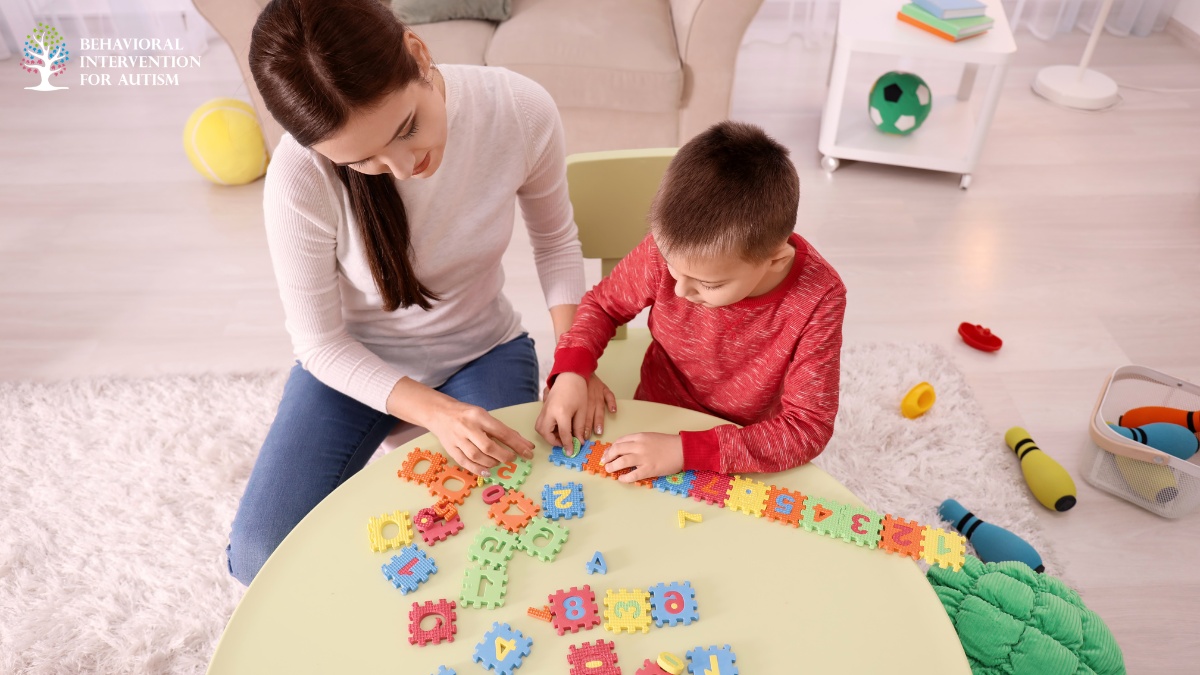
Table of Contents
When it comes to autism spectrum disorder (ASD), early intervention and therapy play crucial roles in supporting individuals and helping them develop essential life skills. Two of the most well-known therapies for autism are TEACCH (Treatment and Education of Autistic and Communication Handicapped Children) and ABA (Applied Behavior Analysis). Both of these therapies aim to assist individuals with ASD in navigating daily challenges, but they do so in distinct ways. Understanding how each approach works, their benefits, and how they can be integrated can help caregivers, parents, and professionals make informed decisions about the best treatment options.
In this article, we’ll explore the core principles behind TEACCH and ABA therapy, comparing their methods, goals, and effectiveness. By delving into each of these therapies, we aim to shed light on the specific ways they help individuals with autism and their families.
What is TEACCH? An Overview of the Approach
TEACCH, which stands for Treatment and Education of Autistic and Communication Handicapped Children, was developed in the early 1970s at the University of North Carolina. This program emerged as a response to the growing recognition that children with autism needed specific interventions tailored to their unique needs. The goal of TEACCH is to provide structured support that helps individuals with autism adapt to their environments in a functional way.
The TEACCH method emphasizes creating a structured, supportive environment with clear expectations and visual cues. It focuses on developing skills in socialization, communication, self-management, and life skills. One of the key principles of TEACCH is that individuals with autism can learn in a structured, visual, and predictable way, with the aid of visual schedules, organized spaces, and routine-based learning.
Key Features of TEACCH Therapy
TEACCH stands out in several ways. First, it is highly individualized, taking into account each person’s strengths, challenges, and sensory needs. Second, it incorporates a strong visual component. Visual supports such as visual schedules, social stories, and visual cues are regularly used to help individuals with autism navigate their daily activities. These visual aids help make abstract concepts more concrete, reducing anxiety and confusion.
In addition to visual supports, TEACCH relies heavily on creating structured environments where individuals can focus and function at their best. This can include personalized workspaces, scheduled routines, and the use of teaching strategies that allow individuals to engage at their own pace.
What is ABA? Understanding the Foundations of Applied Behavior Analysis
Applied Behavior Analysis (ABA) is a proven therapeutic method based on behaviorist principles. First developed in the 1960s, ABA focuses on understanding and changing specific behaviors by using positive reinforcement. The approach aims to improve socially significant behaviors while reducing undesirable or problematic behaviors. ABA is rooted in the idea that behaviors can be learned, unlearned, and modified using scientific principles.
This therapy has been used for decades to treat individuals with autism and other developmental disabilities. ABA focuses on skills like communication, socialization, self-care, academic performance, and behavior regulation. It relies on systematic teaching techniques, consistent reinforcement, and data tracking to monitor progress and adjust strategies.
The Core Principles of ABA Therapy
ABA therapy is based on the principles of learning theory, including positive reinforcement, reinforcement schedules, and task analysis. Positive reinforcement is used to encourage desirable behaviors by providing rewards when an individual performs the desired action. These rewards can be anything from verbal praise to tangible items or activities, depending on the individual’s preferences and needs.
Another key component of ABA is task analysis, which involves breaking down complex tasks into smaller, more manageable steps. This allows individuals with autism to learn new skills by mastering one step at a time. Over time, the steps are gradually put together to complete the entire task.
Data collection is an essential part of ABA therapy. Through continuous observation and assessment, therapists track progress and adjust interventions as necessary to ensure the individual is making meaningful improvements.
TEACCH vs. ABA: A Comparative Overview
As we explore the nuances of both TEACCH and ABA therapies, it’s important to understand their similarities and differences. Both approaches aim to support individuals with autism in leading independent and fulfilling lives, but they do so through distinct methods. The following overview compares key aspects of TEACCH and ABA, highlighting how each therapy works and what it offers in terms of treatment strategies and goals.
Similarities Between TEACCH and ABA
Although TEACCH and ABA are distinct in their approaches, they share several key similarities. Both therapies are rooted in the goal of helping individuals with autism lead independent and meaningful lives. They both emphasize the importance of structured teaching, skill development, and individualized approaches.
Another commonality between the two therapies is the use of reinforcement to encourage positive behaviors. While ABA tends to focus heavily on reinforcement techniques, TEACCH also recognizes the importance of providing positive support and encouragement throughout the learning process.
Moreover, both therapies can be adapted to suit the individual needs of the person receiving treatment. Whether it’s adjusting visual cues in TEACCH or modifying reinforcement strategies in ABA, both methods emphasize a personalized approach.
Differences Between TEACCH and ABA
While both TEACCH and ABA are effective therapies, they differ in several key areas:
1. Focus on Behavior vs. Environment
ABA focuses more heavily on modifying behavior through reinforcement and the systematic analysis of behavior patterns. The goal is often to reduce maladaptive behaviors and replace them with more appropriate ones. TEACCH, on the other hand, is more focused on structuring the individual’s environment to promote independent functioning. It recognizes that individuals with autism may have difficulty with sensory processing, organization, and social cues, so it uses structured visual aids and routines to help individuals thrive.
2. Role of the Therapist
In ABA therapy, the therapist often takes on a more directive role, guiding the individual through tasks, teaching new behaviors, and reinforcing progress. ABA involves a one-on-one setting where the therapist is highly involved in the process. In contrast, TEACCH therapists act more as facilitators, helping individuals to develop skills within a structured environment that they can navigate independently. The emphasis in TEACCH is on creating a supportive and organized environment rather than directing behavior in real-time.
3. Therapy Goals
ABA therapy is goal-oriented, aiming to teach specific skills through reinforcement and behavior modification. The therapy focuses on measurable progress and the acquisition of a broad range of skills, including communication, socialization, and behavior management. TEACCH, while also aiming to develop skills, tends to focus more on providing tools for individuals to independently navigate their world, including sensory integration, organization, and daily living skills.
The Benefits of TEACCH and ABA: Which Is Best?
Comparing TEACCH therapy and ABA therapy highlights the unique benefits each offers. Both approaches have shown success in autism treatment, focusing on distinct strategies and methodologies to support individual growth. Let’s explore their strengths to help determine the best fit for your needs.
The Strengths of TEACCH Therapy
TEACCH has proven to be particularly beneficial for individuals with autism who struggle with sensory processing or need a predictable and structured environment to feel secure. Its emphasis on visual learning is highly effective for many individuals, as visual supports often bridge the gap between verbal instructions and understanding. The structured, low-stress environment that TEACCH creates helps individuals focus on learning at their own pace, which can be highly motivating and reduce anxiety.
One of the unique strengths of TEACCH is that it works well for individuals across a broad range of abilities, including those with more significant cognitive impairments. It offers a tailored approach, incorporating each person’s specific needs into the learning process. The visual supports and structured routines help individuals feel more in control of their environment, leading to increased independence.
The Strengths of ABA Therapy
ABA has been extensively researched and is considered one of the most evidence-based therapies for autism. Its data-driven approach allows therapists to track progress and adjust strategies as needed, ensuring that each individual receives the most effective intervention possible. ABA is effective for individuals at all levels of functioning, from those with significant intellectual disabilities to those with high-functioning autism.
The highly structured nature of ABA helps individuals develop specific skills in a targeted, systematic way. Whether the goal is improving communication, reducing problem behaviors, or increasing academic performance, ABA’s focus on measurable outcomes and reinforcement makes it a powerful tool in autism treatment.
How TEACCH and ABA Can Be Used Together
While TEACCH and ABA have different focuses, they can be used together to create a more holistic and effective treatment plan. Many therapists find that combining the structured environment and visual supports of TEACCH with the behavior modification techniques of ABA offers a more comprehensive approach to autism treatment.
For example, a child might benefit from TEACCH’s visual schedules and routines, while also receiving ABA therapy to address specific behavioral goals. The two approaches complement each other, providing both structure and behavioral guidance to help individuals with autism thrive in various settings, from the home to school and beyond.
Choosing the Right Therapy for Your Child
Both TEACCH and ABA are valuable and effective therapeutic approaches for individuals with autism. The choice between them—or the decision to use both together—depends on the unique needs and goals of the individual. Whether the structured, visual environment of TEACCH or the data-driven, goal-oriented techniques of ABA are more suitable, it’s crucial to understand how each therapy works and how it can best support individuals with autism.
As always, consulting with a professional who specializes in autism treatment will help ensure that you make the right choice for your loved one. With the right combination of therapies, individuals with autism can achieve greater independence, improve their communication skills, and lead more fulfilling lives.
Discover Exceptional ABA Therapy Services in Florida
Experience compassionate and tailored support with Behavioral Intervention for Autism. We take pride in providing top-tier ABA therapy in Florida, designed to help individuals on the autism spectrum achieve their fullest potential. Our team combines expertise with a personalized approach, creating strategies that truly make a difference in everyday life. Whether you’re seeking guidance for specific behavioral goals or comprehensive support, we’re here to help every step of the way. Let us partner with you to create meaningful progress. Contact us today to learn more about our outstanding services and see how we can make a positive impact together!
- 9 Common Obsessions of Children With Autism You Should Know - February 25, 2025
- What is Neurodiversity? A Guide to Embracing Differences - February 25, 2025
- Understanding Hyperfocus in Autism: What It Means and Why It Happens - February 25, 2025



